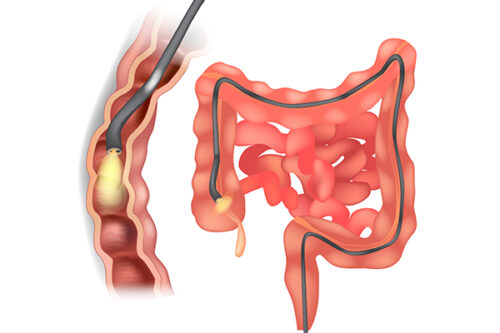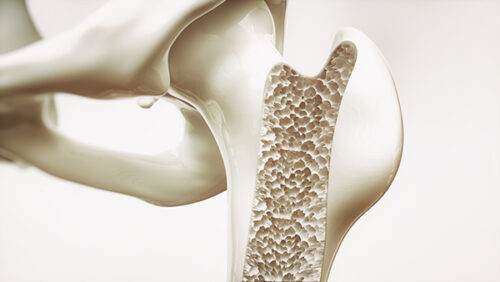Just To Be on the Safe Side: Don’t Take Vitamins
By John McDougall, MD
No one loves me more than my mother; even though there were times during my childhood when I thought she was trying to poison me. Could the chemical aftertaste, belching, and nausea I experienced following the One-a-Day multivitamin capsule she forced me to take along with my orange juice at breakfast have been a warning? She told me vitamins tasted bad, like medicine, so that if a little child found them he or she wouldn’t mistake these pills for candy. By this time in history, medical achievements included the cure of deadly vitamin deficiency diseases, such as scurvy, beriberi, and pellagra. People reasoned, if a few vitamins can cure these ravagers of health, then maybe the answers to cancer or heart disease will be found in supplements too. Why not? This was during the atomic bomb era following WWII when people believed that science would someday soon find the answer to all things important.
Nearly forty percent of the US population takes supplements, with many people spending hundreds of dollars a month. Based on what objective evidence? How many friends and relatives do you know who have suffered from illnesses caused by a vitamin deficiency, such as scurvy from vitamin C deficiency, beriberi from insufficient vitamin B1, or pellagra from a lack of niacin? How about protein or essential fatty acid deficiencies? The truth is none. Now, turn your vision 180 degrees. I’ll ask you the opposite question. How many of your friends and relatives have diseases caused by nutritional excesses—from consuming too much cholesterol, fat, sodium, protein and/or far too many calories? The answer is most of them.
Health problems from excesses cannot be corrected with treatments useful for deficiencies. Have you ever known a person who has lost 100 pounds by taking supplements or cured their arthritis, hypertension, colitis, or type-2 diabetes through vitamin and mineral therapies? I bet you haven’t and neither have I. But every day I have contact with someone, in person or by e-mail, who has achieved such benefits by changing their diet and going for a daily walk out in the sunshine. Thus, there is no “bang for the buck” in believing in supplements. They simply don’t work for the problems that currently plague people. Doctors who prescribe supplements are practicing “faith-based medicine.” They must believe, because there is no good evidence supporting their actions—no valid research to guide them and no patient results to reward them.
Supplements Are Not Food
In an effort to improve on Mother Nature’s creations, and to make big fat profits, scientists and entrepreneurs have developed thousands of products based on isolated concentrated nutrients. The enterprise begins by finding a pharmacologically active ingredient in a common food. Through science and manufacturing technology this substance is purified, then replicated into large quantities, and sold to the customer as a “potent, but natural remedy.” Familiar examples of such concentrates include isolates of soy and whey proteins, omega-3 fish and flaxseed oils, and vitamins and minerals. These magic bullets are delivered to the consumer in the form of pills, powders, liquids, nutrition bars, “health” drinks, and fortified foods. They are supposed to offset the effects of destructive habits and fix the customers’ bad health, naturally (like with no side effects) and almost effortlessly. High profits, and the satisfaction of consumers’ desires for quick fixes, guarantee healthy businesses based on selling various concentrates.
Vitamins are organic compounds that cannot be synthesized by the human body and therefore must be eaten in order for us to remain healthy and prevent serious illnesses. Plants synthesize 11 of the 13 known vitamins. Vitamin D is actually not a vitamin, but a hormone manufactured by the body with the action of sunlight on the skin, and bacteria make the only non-plant-derived vitamin, which is B12. Plants are also the source for minerals, all of which originate in the ground and enter into living systems through the roots of plants. Plant parts (starches, vegetables, and fruits) are the proper packages for delivering these, and many more, essential nutrients to the body. A harmonious relationship between people and plants translates into good health.
The Whole Is Much Greater than the Parts
Place an assortment of fruit on the table in front of you. Can you identify the yellow banana? Are you having any trouble picking out the orange? Are you calling the small, oblong round green objects grapes? Notice that you have no difficulty distinguishing between and properly naming each and every fruit. This is because their precise and perfect molecular architecture results in a distinct easily identifiable form for each and every fruit (and vegetable). Tens of thousands of proteins, fats, carbohydrates, fibers, vitamins, minerals and other phyto (plant)-chemicals are present in proper amounts, kinds, and physical positions within each food. If not for the exact correctness then you would not have a green kiwi fruit.
Good nutrition begins as the whole food is chewed into smaller parts and swallowed. The masticated parts still contain all of the basic components and most of the same physical relationships as the original whole food. After more digestion, these food parts enter the bloodstream and are carried to the body’s 10 trillion cells. This blood-borne mixture of nutrients actively passes through the cells’ membranes into the inner cellular fluid (cytoplasm). Here this vital balance of nutrients provides the raw materials for the cellular machinery to run properly. If too few or too many of any of the components of the digested and assimilated food are present within the cell then imbalances occur, resulting in less than optimal function at the cellular level, followed by disease. Scientists barely understand the orchestrations that take place between our foods and our bodies. But they do recognize that perfect harmony exists.
Supplements Make People Sick
People believe in supplements, even though the preponderance of scientific evidence condemns taking isolated concentrated nutrients. Most carefully studied are the effects of beta-carotene, vitamin E (alpha-tocopherol), and folic acid. Randomized controlled trials involving more than a hundred thousand subjects have proven that taking these and other supplements increase a person’s risk of heart disease, cancers, and premature death. Damage to the kidneys in diabetics and an increase in the severity of respiratory infections have also been shown. (See below for details on some of these major studies.) Vitamin supplement manufacturers, stores selling vitamins, medical doctors, and dietitians should act responsibly and warn consumers about the serious health hazards from these highly profitable potions.1 For the same reasons, fortification of our food supply (cereals and flours) with folic acid and other nutrients should be stopped.2
Two highly respected Cochrane Reviews published in 2008 concluded, “Beta-carotene, vitamin A, and vitamin E given singly or combined with other antioxidant supplements significantly increase mortality (death).”3,4 There is no higher authority than a report from the Cochrane Collaboration.
Supplements Kill By Causing Metabolic Imbalances
Three decades ago it was well established that people who consume more beta-carotene in their diets are less likely to develop many kinds of cancer, including lung cancer.5,6 Following this observation, a hypothesis was developed that a single nutrient, beta-carotene, was the key to cancer prevention. Two well-designed trials published in 1994 and 1996 compared the effects of taking beta-carotene supplements to a placebo for people at high risk for developing lung cancer (smokers and those exposed to asbestos).7,8
Unexpectedly, in these two investigations more cancers were found in those people taking the beta-carotene pills. However, these findings did not invalidate the original observation: People who eat more fruits and vegetables have a lower risk of cancer. Beta-carotene is only found in plants, thus serves as a marker for the quantity of fruits and vegetables consumed. What is true is that a diet high in plant foods protects against cancer. The same effect does not carry over to consuming single nutrients, like beta-carotene. A pill is not a plant.
Beta-carotene is one of about 50 similar naturally occurring active substances in our diet classified as carotenoids. They are all especially abundant in yellow and orange fruits and vegetables. After nutrients enter cells they float around in the cell’s fluids (cytoplasm) until they attach themselves to the cellular machinery through a specific receptor, like a key fits into a lock. Beta-carotene and all of the other biologically active carotenoids must attach to these specific carotenoid receptors before they can function.
When a cell is flooded with one kind of carotenoid, in this case beta-carotene after vitamin supplementation, then there is an overwhelming competition for the carotenoid receptor sites.9 The other 50 functional carotenoids are displaced by the beta-carotene from their cellular connections, creating deadly nutritional imbalances.
Consider this analogy: A person drives from home to work. After entering the building, the typical employee begins the day by walking around and greeting fellow workers, stopping by the water cooler to catch up on some daily gossip. So far nothing productive for the company has been accomplished. Finally, the worker sits at his or her designated workstation—say a desk with a computer and a telephone—and becomes productive. At this place of business there are many workstations and many workers with different talents—accountants, secretaries, designers, managers, etc.—who collectively and interactively make the company run productively and profitably. This would all change if one day the boss decided to hire a hundred extra accountants without any real need for their services, and to make matters worse, without adding any new workstations. The result would be chaos and soon bankruptcy from the disharmony created in the organization.
Save Your Money and Your Health
In the mid-nineties I was the host of a Sunday evening radio talk show called “To Your Health.” My two-hour broadcast was carried by the largest radio stations in the biggest cities, such as Los Angeles (KABC), San Diego (KSDO), Sacramento (KSTE), and San Francisco (KNBR), all over the west coast and was heard by millions of people. I received over 2000 phone calls each evening on average (of course, only a fraction of those callers could be answered). The show’s sponsors were mostly natural food stores and their top revenue streams came from the supplement aisles. During my monologue at the beginning of each show I would discuss the newest scientific research. I tried to balance “negative” articles, such as, vitamin A (Retinol) causes a 1 in 57 chance of birth defects when taken by a pregnant woman and increases hip fractures in elderly adults, with “positive” ones, for example, folic acid supplementation taken before pregnancy reduces the risk of serious birth defects.10-13
However, I wasn’t balanced enough for one group of “vitamin activists” from Los Angeles who edited together excerpts of my anti-supplement messages into a tape played for my sponsors each Monday morning. Fortunately, I weathered these attacks and survived for three years on this large network. In time, the really big sponsors of these powerful radio stations took a listen to my anti-meat, anti-dairy, and anti-pharmaceutical messages. In spite of my popularity I lost all of my shows over a three-week period in 1996. Money talks, even on talk radio. But that does not change the truth.
Whether you are scientifically minded and believe in the perfection created by 400 million years of evolution, or devoutly religious and believe in the perfection of a Divine Creator, or both, you must believe that the world we live in is inherently correct. The trillions of interactions that occur between flora, fauna and Mother Earth are purposeful and harmonious. You have also observed that man’s interference with Nature’s mysterious workings usually results in unintended catastrophes. Failure to follow the natural starch-based diet for humans is the reason more than a billion people are overweight and sick today. Trying to fix modern-day health problems with supplements adds to the injury at great financial costs. (Sales of dietary supplements to US Consumers were $25.2 billion in 2008.)14 Scientific facts and reasoning call for the blind and misguided faith in supplements to stop.
Randomized Controlled Trials Prove Supplements Are Dangerous:
More Cancer
The Alpha-Tocopherol, Beta Carotene Cancer Prevention Study Group. A total of 29,133 male smokers were assigned to one of four regimens: alpha-tocopherol (vitamin E) alone, beta-carotene alone, both alpha-tocopherol and beta-carotene, or placebo.7 Findings: 18 percent more lung cancer and 8 percent more deaths in those taking the preparations with beta-carotene.
The Beta Carotene and Retinol Efficacy Trial. A total of 18,314 smokers, former smokers, and workers exposed to asbestos assigned to take beta-carotene and retinol (vitamin A) or placebo.8 Findings: 17 percent more deaths, 46 percent more lung cancer, and 26 percent more cardiovascular disease for those taking the supplement.
The Selenium and Vitamin E Cancer Prevention Trial (SELECT). A total of 35,533 men were assigned to one of four groups: selenium, vitamin E, selenium plus vitamin E, or placebo.15 Findings: 13 percent more prostate cancer for the vitamin E groups. No prevention of prostate cancer by any supplement intervention.
More Heart Disease
MRC/BHF Heart Protection Study. A total of 20,536 adults with coronary disease, other occlusive arterial disease, or diabetes were allocated to receive antioxidant vitamin supplementation (vitamin E, vitamin C, and beta-carotene daily) or placebo.16 Findings: Increased vitamin concentrations in the subjects’ blood, but no reductions in vascular disease, cancer, or death.
Alpha-tocopherol Beta-carotene Cancer Prevention Study. A total of 1862 male smokers who had had a previous myocardial infarction were assigned to dietary supplements of alpha-tocopherol, beta-carotene, both, or placebo.17 Findings: There were 75% more deaths from fatal coronary artery disease in the beta-carotene groups and a slight increase in the alpha-tocopherol groups.
The HOPE-TOO trial. A total of 9541 patients were assigned to vitamin E or placebo.18 Findings: No difference in cancer or cardiovascular deaths. Patients in the vitamin E group had a higher risk of heart failure.
Folate After Coronary Intervention Trial. A total of 636 patients with heart artery stents were assigned to receive folic acid, vitamin B6, and vitamin B12 or placebo.19 Findings: Greater restenosis (artery closure) and repeat heart surgery for those taking the supplement with folic acid.
The NORVIT Trial. A total of 3749 men and women who had had an acute myocardial infarction within seven days were assigned to be in one of four groups: folic acid, vitamin B12, and vitamin B6; folic acid and vitamin B12; vitamin B6; or placebo.20 Findings: Homocysteine decreased by 27 percent, but the risk of heart attack, stroke, and cancer was increased by 20 to 30 percent in the groups with the folic acid supplement.
Women’s Antioxidant and Folic Acid Cardiovascular Study. 5442 women with either a history of CVD or 3 or more coronary risk factors were assigned to receive folic acid, vitamin B6, and vitamin B12, or placebo.21 Findings: Homocysteine decreased by 19 percent, but the risk of heart attacks, strokes, heart surgery, and death was not reduced.
More Kidney Damage in Diabetics
The Diabetic Intervention with Vitamins to Improve Nephropathy Trial. A total of 238 participants who had type-1 or -2 diabetes and a clinical diagnosis of diabetic nephropathy (kidney disease) were assigned to folic acid, vitamin B6, and vitamin B12, or placebo.22 Findings: The vitamin group had worse kidney function and twice as many vascular events.
More Fractures in Elderly
High Dose Oral Vitamin D Trial. A total of 2256 community-dwelling women, aged 70 years or older, were assigned to receive 500,000 IU of Vitamin D (cholecalciferol) or placebo.23 Findings: Women taking the vitamin D had more falls and fractures.
More Severe Respiratory Infections
A Randomized Trial on Vitamin E and Infections. A total of 652 non-institutionalized elderly were assigned multivitamin-minerals, 200 mg of vitamin E, both, or placebo.24 Findings: No change in frequency of respiratory infections, but the severity was worse in those taking vitamin E.
References:
1) Miller ER 3rd, Guallar E. Vitamin E supplementation: what’s the harm in that? Clin Trials. 2009 Feb;6(1):47-9.
2) Hubner RA, Houlston RD, Muir KR. Should folic acid fortification be mandatory? No. BMJ. 2007 Jun 16;334(7606):1253.
3) Bjelakovic G, Nikolova D, Simonetti RG, Gluud C. Antioxidant supplements for prevention of mortality in healthy participants and patients with various diseases. Cochrane Database Syst Rev. 2008 Apr 16;(2):CD007176.
4) Bjelakovic G, Nikolova D, Simonetti RG, Gluud C. Antioxidant supplements for preventing gastrointestinal cancers.
Cochrane Database Syst Rev. 2008 Jul 16;(3):CD004183.
5) Peto R, Doll R, Buckley JD, Sporn MB. Can dietary beta-carotene materially reduce human cancer rates? Nature. 1981 Mar 19;290(5803):201-8.
6) Bjelke E. Dietary vitamin A and human lung cancer. Int J Cancer. 1975 Apr 15;15(4):561-5
7) The effect of vitamin E and beta carotene on the incidence of lung cancer and other cancers in male smokers. The Alpha-Tocopherol, Beta Carotene Cancer Prevention Study Group. N Engl J Med. 1994 Apr 14;330(15):1029-35.
8) Omenn GS, Goodman GE, Thornquist MD, Balmes J, Cullen MR, Glass A, Keogh JP, Meyskens FL, Valanis B, Williams JH, Barnhart S, Hammar S. Effects of a combination of beta carotene and vitamin A on lung cancer and cardiovascular disease. N Engl J Med. 1996 May 2;334(18):1150-5.
9) Pietrzik K. Antioxidant vitamins, cancer, and cardiovascular disease. N Engl J Med. 1996 Oct 3;335(14):1065-6;
10) Dolk HM. Dietary vitamin A and teratogenic risk: European Teratology Society discussion paper. Eur J Obstet Gynecol Reprod Biol. 1999 Mar;83(1):31-6.
11) Rothman KJ. Teratogenicity of high vitamin A intake. N Engl J Med. 1995 Nov 23;333(21):1369-73.
12) Michaelsson K. Serum retinol levels and the risk of fracture. N Engl J Med. 2003 Jan 23;348(4):287-94.
13) Blencowe H, Cousens S, Modell B, Lawn J. Folic acid to reduce neonatal mortality from neural tube disorders. Int J Epidemiol. 2010 Apr;39 Suppl 1:i110-21.
14) http://www.npicenter.com/anm/templates/newsATemp.aspx?articleid=25335&zoneid=2
15) Lippman SM, Klein EA, Goodman PJ, Lucia MS, Thompson IM, Ford LG, et al. Effect of selenium and vitamin E on risk of prostate cancer and other cancers: the Selenium and Vitamin E Cancer Prevention Trial (SELECT). JAMA. 2009;301:39-51.
16) Heart Protection Study Collaborative Group. MRC/BHF Heart Protection Study of antioxidant vitamin supplementation in 20,536 high-risk individuals: a randomised placebo-controlled trial. Lancet. 2002 Jul 6;360(9326):23-33.
17) Rapola JM, Virtamo J, Ripatti S, Huttunen JK, Albanes D, Taylor PR, Heinonen OP. Randomised trial of alpha-tocopherol and beta-carotene supplements on incidence of major coronary events in men with previous myocardial infarction. Lancet. 1997 Jun 14;349(9067):1715-20.
18) Lonn E, Bosch J, Yusuf S, Sheridan P, Pogue J, Arnold JM, Ross C, Arnold A, Sleight P, Probstfield J, Dagenais GR; HOPE and HOPE-TOO Trial Investigators. Effects of long-term vitamin E supplementation on cardiovascular events and cancer: a randomized controlled trial. JAMA. 2005 Mar 16;293(11):1338-47.
19) Lange H, Suryapranata H, De Luca G, Bˆrner C, Dille J, Kallmayer K, Pasalary MN, Scherer E, Dambrink JH. Folate therapy and in-stent restenosis after coronary stenting. N Engl J Med. 2004 Jun 24;350(26):2673-81.
20) B¯naa KH, Nj¯lstad I, Ueland PM, Schirmer H, Tverdal A, Steigen T, Wang H, Nordrehaug JE, Arnesen E, Rasmussen K; NORVIT Trial Investigators. Homocysteine lowering and cardiovascular events after acute myocardial infarction. N Engl J Med. 2006 Apr 13;354(15):1578-88.
21) Albert CM, Cook NR, Gaziano JM, Zaharris E, MacFadyen J, Danielson E, Buring JE, Manson JE. Effect of folic acid and B vitamins on risk of cardiovascular events and total mortality among women at high risk for cardiovascular disease: a randomized trial. JAMA. 2008 May 7;299(17):2027-36.
22) House AA, Eliasziw M, Cattran DC, Churchill DN, Oliver MJ, Fine A, Dresser GK, Spence JD. Effect of B-vitamin therapy on progression of diabetic nephropathy: a randomized controlled trial. JAMA. 2010 Apr 28;303(16):1603-9.
23) Sanders KM, Stuart AL, Williamson EJ, Simpson JA, Kotowicz MA, Young D, Nicholson GC. Annual high-dose oral vitamin D and falls and fractures in older women: a randomized controlled trial. JAMA. 2010 May 12;303(18):1815-22.
24) Graat JM, Schouten EG, Kok FJ. Effect of daily vitamin E and multivitamin-mineral supplementation on acute respiratory tract infections in elderly persons: a randomized controlled trial. JAMA. 2002 Aug 14;288(6):715-21.
Recommended Articles

Gluten-Free Diets Are Harmful for the General Population (Except for One Percent)

Colonoscopy: A Gold Standard to Refuse







